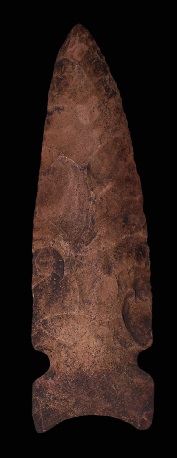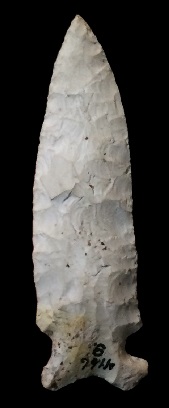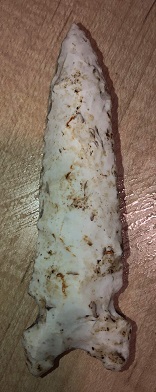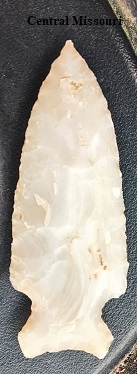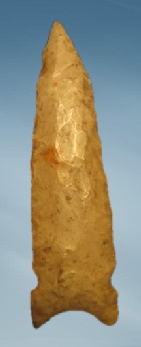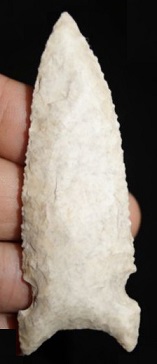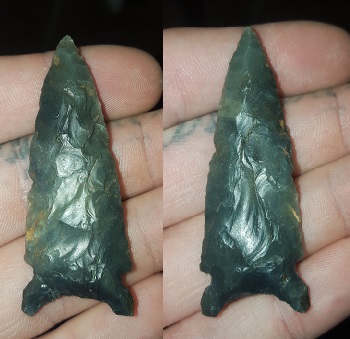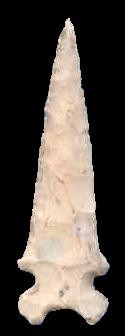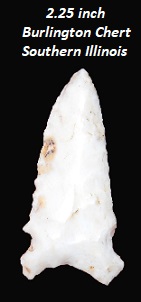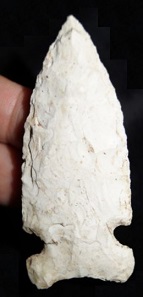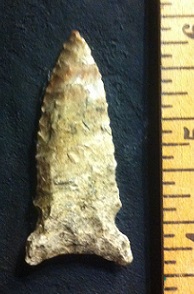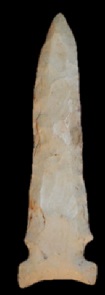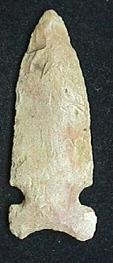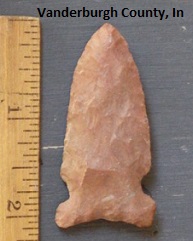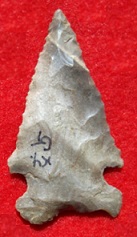Outline is Representative of Size and Shape:

Name Details:
Identified By: Edward G. Scully (described) / Wilfred Logan (named)
Named For: Type Site
Date Identified: 1951/ 1952
Type Site: Graham Cave Site, Montgomery County, Missouri
Identified By: Edward G. Scully (described) / Wilfred Logan (named)
Named For: Type Site
Date Identified: 1951/ 1952
Type Site: Graham Cave Site, Montgomery County, Missouri
Point Validity:
Valid type
Scully is a highly respected anthropologist from the University of Michigan who conducted extensive research in the Mississippi River valley and identified many different types of projectile points. This type was named in a professional publication and has many professional references. This is considered a valid type.
Scully is a highly respected anthropologist from the University of Michigan who conducted extensive research in the Mississippi River valley and identified many different types of projectile points. This type was named in a professional publication and has many professional references. This is considered a valid type.
Graham Cave Side Notch
Cluster: Large Side Notch Cluster Description of Physical Characteristics and Flaking Pattern:
This is a medium to large side notched point with a flattened cross section. The blade is long and narrow and may vary from straight to excurvate or incurvate and commonly a narrow and long blade. Serrations are generally seen on re-sharpened blades. Parallel notches are deep and low on the blade forming a shoulders are horizontal to having an upward slope. The stem is expanding with a concave base with heavy basal grinding. The basal area commonly has sharp basal auricles (ears). This point is manufactured using broad random percussion flaking with pressure flaking used for trimming to smooth the blade. Short marginal pressure retouch along the blade edges forming a random flaking pattern. Rarely, this point has been fluted.
Size Measurements:
Total Length - 45 to 152 mm (average 55 to 70 mm), Stem Length - 10 to 20 mm (average 15 mm), Blade Width - 20 to 34 mm, Neck Width - 13 to 25 mm (average 15 to 20 mm), Stem Width - 20 to 35 mm
Total Length - 45 to 152 mm (average 55 to 70 mm), Stem Length - 10 to 20 mm (average 15 mm), Blade Width - 20 to 34 mm, Neck Width - 13 to 25 mm (average 15 to 20 mm), Stem Width - 20 to 35 mm
Commonly Utilized Material:
Local cherts and flints. Heat treatment is not used on this type.
Local cherts and flints. Heat treatment is not used on this type.
Additional Comments:
Three variations have been identified for this point.
Subtype A: This is a long point with small exact side notches. The base is deeply concaved with the basal ears having a barbed appearance. The blade is finely serrated and may be recurvate in heavily re-sharpened examples. The cross section is usually thick with an elliptical cross section.
Subtype B: This is a thin point with a wide blade. The blade is usually excurvate.
Subtype C: This variation also has an excurvate blade, but has round basal ears (Justice, 1987).
This point is similar to Osceola points, but Osceola points generally have less refined workmanship and exhibit a straight to slightly concave base with the notches usually located higher on the blade than the typical of Graham Cave (Morrow, 2016)
Three variations have been identified for this point.
Subtype A: This is a long point with small exact side notches. The base is deeply concaved with the basal ears having a barbed appearance. The blade is finely serrated and may be recurvate in heavily re-sharpened examples. The cross section is usually thick with an elliptical cross section.
Subtype B: This is a thin point with a wide blade. The blade is usually excurvate.
Subtype C: This variation also has an excurvate blade, but has round basal ears (Justice, 1987).
This point is similar to Osceola points, but Osceola points generally have less refined workmanship and exhibit a straight to slightly concave base with the notches usually located higher on the blade than the typical of Graham Cave (Morrow, 2016)
Distribution: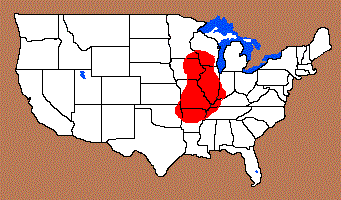
Distribution Comments:
These points are found in the highest concentrations in Missouri and Illinois. This point may be found in the upper Mississippi river and it's tributaries.
These points are found in the highest concentrations in Missouri and Illinois. This point may be found in the upper Mississippi river and it's tributaries.
Age / Periods:
Date: 10,000 - 7,500 B.P.
Cultural Period: Early Archaic
Glacial Period: Early Holocene
Culture:
Date: 10,000 - 7,500 B.P.
Cultural Period: Early Archaic
Glacial Period: Early Holocene
Culture:
Age Details:
Other points in this cluster / Related / Associated Points:
Big Sandy ,Cache River, Godar, Greenbrier, Hemphill, Howard County, Madison Side Notched, Osceola, Osceola Greenbrier, Raddatz, Simonsen
Big Sandy ,Cache River, Godar, Greenbrier, Hemphill, Howard County, Madison Side Notched, Osceola, Osceola Greenbrier, Raddatz, Simonsen


